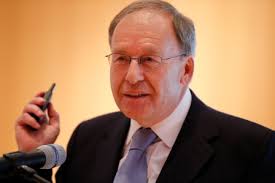October 6, 2016
RIP Professor Norman Palmer
A great mind, as a barrister he defended numerous cultural property cases
I was very sad to hear yesterday of the death of Professor Norman Palmer.
I have met him numerous times, both at conferences and other events relating to cultural property restitution, as well as sitting on the opposite side of the table from him, as part of the group interviewing a team about their suitability for representing Greece in the case to reunify the Parthenon Sculptures.
Readers of this site may be most familiar with him as part of the team with Geoffrey Robertson and Amal Clooney that met with the Greek Government in 2014. Palmer was also well known within the sphere of cultural property restitution for chairing the Human Remains Working Group, whose work eventually led to the change in UK law allowing the repatriation of human remains to indigenous peoples in Australia and elsewhere.
He advised governments and international bodies on the drafting of new cultural property laws and was instrumental in the resolution of various cultural property disputes. He was also a great supporter of mediation and other out of court settlement methods for cultural property disputes.
Immensely knowledgeable, Norman’s academic credentials added gravitas to any team he was a part of. He will be sadly missed.
From:
Institute of Art and Law
In Memoriam – Norman Palmer QC CBE
Posted on: October 5, 2016 by Alexander HermanWe are sad to announce that the Institute of Art & Law’s Academic Principal, Norman Palmer QC (Hon) CBE, has passed away. Norman was the guiding light of this organisation ever since its beginnings over twenty years ago. Along with his wife, Ruth Redmond-Cooper, he made the IAL what it is today. He provided countless hours of instruction to hundreds of students and will no doubt be sorely missed by all. His wisdom and intellectual curiosity led to the publication of foundational tomes, including Palmer on Bailment, Art Loans and Museums and the Holocaust, as well as dozens of articles in the area of art and cultural property law.
And some more details about him and his career.
Read the rest of this entry »


